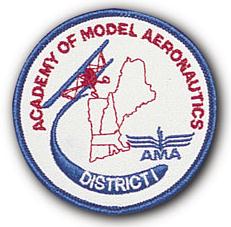Q1. As a new member of the Academy of Model Aeronautics (AMA), what key areas of RC flying and aeromodelling do I need to consider and understand? In short, your journey in recreational aeromodelling should prioritize safety through adherence to rules and guidelines, focus on continuous learning with the support of your local club, involve careful equipment setup and maintenance, encourage active engagement with the community, and emphasize responsible operation within the regulatory framework. Enjoy the process, be patient with yourself, and embrace the rewarding experience of flight! |
Safety First & Foremost:
- AMA National Model Aircraft Safety Code: Read it and adhere to the rules for safe flight operations.
- Club Site Rules: AMA clubs will likely have additional site rules you need to follow.
- Visual Line of Sight (VLOS): Maintain clear, unaided visual contact with your aircraft during flight.
- Weather: Be aware of wind speed, direction, precipitation, and visibility. Don’t fly when weather conditions inhibit seeing the aircraft’s direction, orientation, or maintaining flight stability.
- Pre-Flight Checks: Create a pre-flight checklist and perform it before every flight. Check control surface movement, battery levels, propeller security, and overall aircraft integrity.
- Buddy Box System: If possible, learn with an experienced instructor using a buddy box system.
Learning and Skill Development:
- Join a Local AMA Club: This is the single most valuable step. Experienced members offer guidance, mentorship, and a safe flying environment.
- Seek Instruction: Don't try to learn everything on your own. Enlist help from qualified club instructors.
- Start with a Trainer Aircraft: Choose a high-wing, durable model with forgiving flight characteristics and preferably SAFE (Sensor Assisted Flight Envelope) technology.
- Utilize a Flight Simulator: Practice on a simulator to develop hand-eye coordination and learn the basics of control without any risk.
- Be Patient and Persistent: Learning to fly takes practice. Don't get discouraged by initial mistakes or crashes. View them as learning experiences.
- Gradual Progression: Start with basic maneuvers (takeoff, level flight, gentle turns, landing) and gradually progress to more complex ones as your skills improve.
Equipment and Setup:
- Choosing Your Initial Aircraft and Radio: Research and select a beginner-friendly aircraft and a reliable radio system (often best started with an RTF package). Consider advice from club members.
- Proper Assembly and Setup: Follow manufacturer's instructions. Ensure correct control surface movement, secure linkages, and proper Center of Gravity (CG).
- Trimming Your Aircraft: Learn how to properly trim your aircraft for stable, hands-off flight.
- Battery Care and Safety: Understand safe handling, charging, and storage of batteries (especially LiPo batteries). Follow manufacturer's guidelines and advice from experienced members.
Community and Engagement:
- Get Involved in Your Local Club: Attend meetings, participate in events, and volunteer to help with site projects and events.
- Network with Other Members: Share experiences, ask questions, and learn from the aeromodelling community.
- Respect Flying Sites and Neighbors: Be mindful of noise levels and maintain good relationships with those living near your flying site.
- Stay Informed: Keep up-to-date with AMA news, FAA regulations, and advancements in the hobby through AMA MEDIA & PUBLICATIONS
Regulations and Responsibility:
- FAA Flyer Requirements: Understand and comply with current FAA regulations for recreational model aircraft flying. Take the FAA online TRUST test and acquire an FAA registration number to label your aircraft if it weighs over 0.55 pounds.
- Remote ID: Determine if the sites you intended to fly at requires the use of a Remote ID broadcast module to be affixed to your aircraft while flying.
- Differences between flying locations (FRIA vs. non-FRIA sites).
- Airspace Awareness: Understand the different types of airspace and any restrictions in your flying area.


